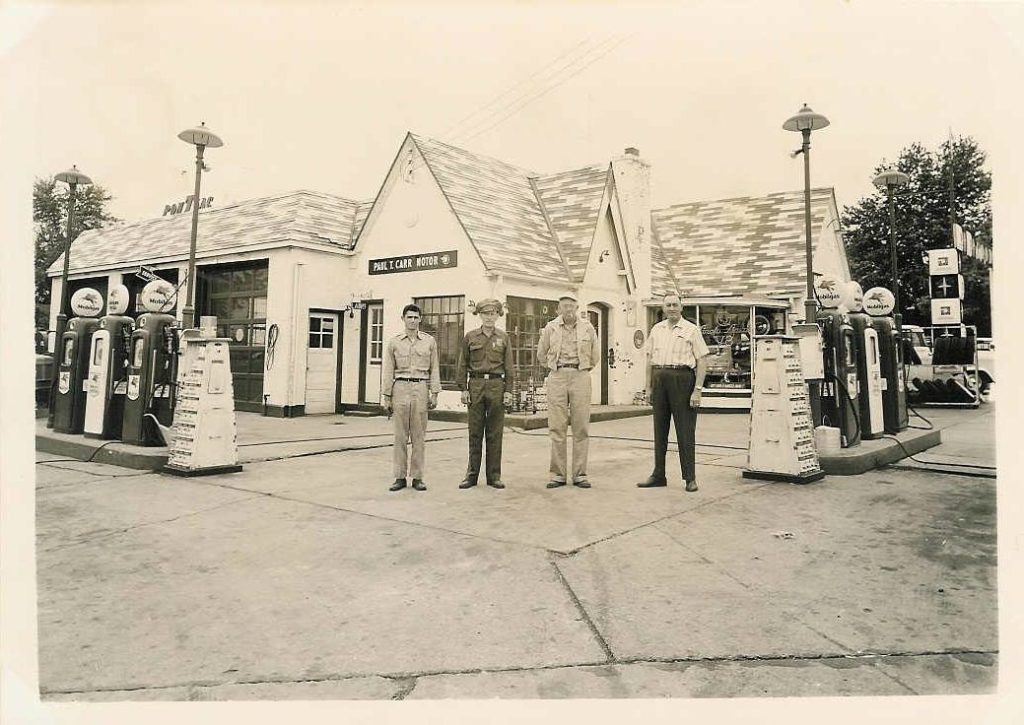
L-R Ralph Wirz, Ervin Hendrickson, Homer Carr, and Paul T. Carr stand proudly in front of the successful business on the corner of Route 66. The station was a Mobil gas station at this time although the P for Phillips is still in place on the chimney. Paul T. Carr built the station in 1932 when the coming of Route 66 increased a mobile America’s need for fuel.
History of the Phillips 66 Station
The Paul T. Carr Years
Let’s go back to the history of Paul T. Carr’s Phillips 66 station that opened in 1932 to see how the station has added to Cuba, MO’s history at the 4-Way intersection.
Locals have long called the location “the four way,” because of the four stop signs that marked the busy intersection. Today, a modern traffic light serves that purpose.
Over the years, the little station on the corner of Highway 19 and Route 66 in Cuba, Missouri, became obsolete and sat empty as a quaint afterthought of grander times. Often, people would speculate what the P on the chimney stood for. Some thought the P was the initial of the original owner, Paul T. Carr. Others thought maybe it was for the Pontiac cars that he sold there.
The Station’s Beginnings and its Builder 1932-1960s
It was at the 4-way intersection, where the Midway Cafe & Garage were already doing business on the opposite corner, where visionary Paul T. Carr stepped onto the scene to build his gas station in 1932. He recognized the needs of the Route 66 traveler on the new highway that would span 8 states.
Longtime Cuba businessman Bob Coffman first met Paul Carr in 1958. Since Carr and Coffman were both active in the Masonic Lodge, they rode together to several Masonic activities in St. Louis. “That’s when he related to me how he came to have the gas station,” said Coffman. “Paul was working for Roy Earls in a garage where the Midway building is located (The Midway has since been torn down). Carr’s wife had passed away, leaving a young daughter Jeanne to raise. Since this was in the middle of the great depression, there wasn’t much money for anything but the barest necessities.”
However, Carr did not let adverse conditions stop him. He purchased the lot at the corner of Highway 19 and Route 66 in the center of Cuba.
His father was W.E. Carr, a cashier of the Cook Station Bank. He couldn’t make him a building loan but sent his son to Bob Judson at Roberts-Judson Lumber Company, who was a friend of W.E. Carr. “Paul explained his need for money to build a station in Cuba, and Mr. Judson asked who his father was, to which Paul replied ‘W.E Carr at Cook Station,’” Coffman said. Mr. Judson told him in that case he would loan him whatever he needed. Carr opened the station in 1932. According to Coffman, “It was a hand shake deal, and no papers were ever filed.”
The Carr Service Station began as a Phillips 66 Type “B” brick service station. The station operated this way in the 1930s and also served as a site for Carr & Branson Used Cars. From its original construction, there were additions to the south and west. By the late 1940s, Paul Carr’s station was doing business as a Standard station and as Paul T. Carr Motor Company, which was a Pontiac dealership.
According to Joy Brandenburger, her father Ervin Hendrickson started working for Carr in 1948 when the station was Standard Oil: “My dad started selling cars there, too. He said he could only get two cars a month. My dad left the station in 1960 to become a mail carrier, but my mom and dad bought a new car from Paul Carr every year from 1951 to 1964.” Brandenburger remembers playing with toy cars at the station and riding with her dad in the bulk truck to Cherryville.
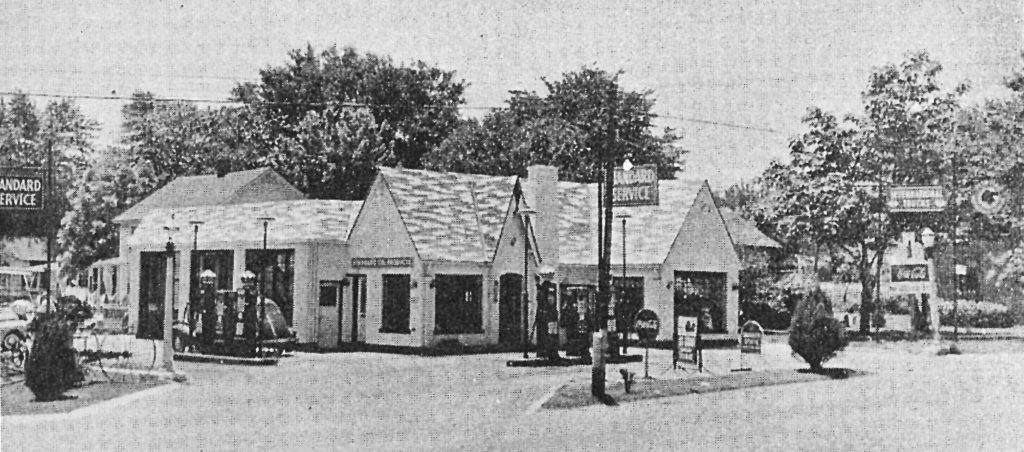
The little station started as a Phillips 66 Station but was also a Standard and a Mobil station over the years. Notice the unique roof pattern that is still visible today.Paul T. Carr’s home was behind the station.
Paul Carr built a house behind the station for him and his second wife Peg. The house is no longer there and part of the lot serves as a parking lot for the present Fourway Restaurant. Carr was always civic minded and belonged to many organizations. Carr had a stroke in 1964 and died in February of that year.
The Wallis Years 1968 to the Present
In 1968, another civic minded visionary would be associated with the station when Bill and Lynn Wallis purchased the property. Bill Wallis, who was raised in Leasburg and attended Bourbon High School, went to work in a gas station during high school and after graduation had a chance to buy the station. With an $1,800 loan, Wallis bought the station and went on to buy three more in the Sullivan area. Even though he had a deferment to take care of his mother and sister after his father had been killed in an accident, Wallis chose to go in the army because he didn’t want to stay on the sidelines while his friends were off fighting.
When he returned home in 1968, he married his high school sweetheart Lynn. They had the opportunity to buy the little station at the crossroads, which was a Skelly distributorship at the time. As had been the case for Paul T. Carr in 1932, the Wallises, based in the station, were about to embark on another successful business venture that would impact the community in many positive ways.
The station was soon changed to a Mobil Station and the office of the fledgling Wallis Oil Company. The first Wallis child was born the same year. From these modest beginnings, Wallis Companies employs over 700 people throughout Missouri and is one of the Exxon Mobil’s largest fuel and lubricant distributors in the United States.
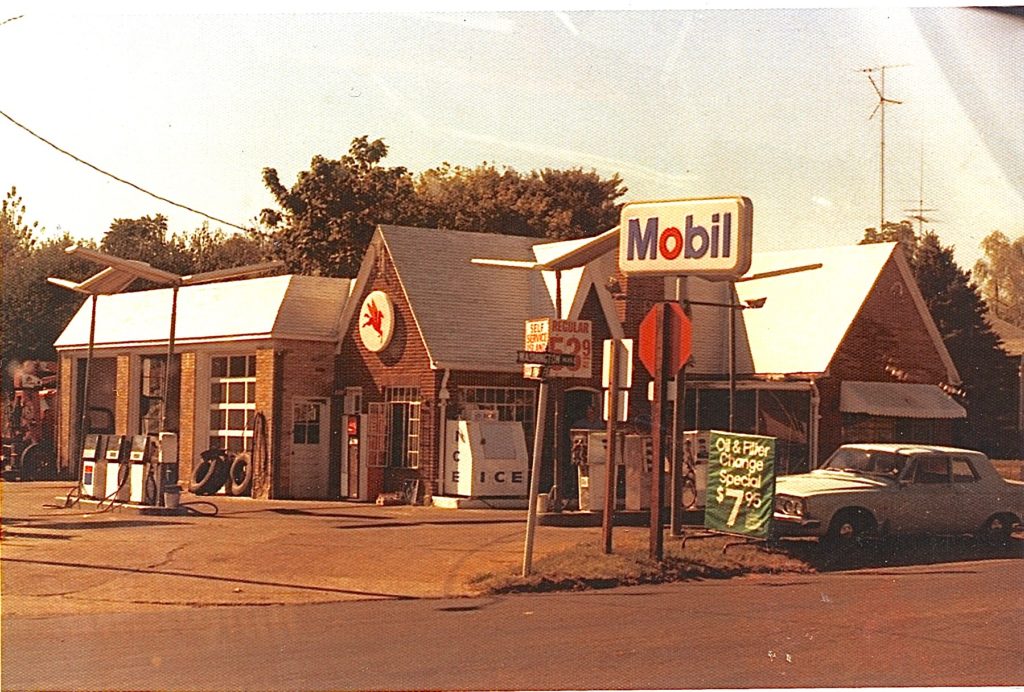
In the late 60s, the 70s, and the 80s, the station became a Mobil station while under the ownership of the Wallis family.
Due to a growing demand for space, in 1985, the office was moved across the street, and the small station building was converted to Washington Street Bakery where doughnuts were baked daily to service their convenience stores. After the bakery closed, the station remained empty although the outside was restored in 2005.
Today, Wallis corporate headquarters is a large brick building across the street from that cottage style brick station where Wallis Oil Companies began. Sadly, in 2001, Bill passed away and left Lynn and his four children to continue his legacy of business and philanthropy.
The Murals 2007
A fast food franchise offered to buy the building and lot, but the Wallis family, realizing that the station would be torn down, elected not to sell. Not only had the station played a role in the history of the town but also it was important to Wallis family history.
In 2005, with some input from the community beautification organization Viva Cuba and the help of a Route 66 Preservation grant, the Wallis family arrived at an innovative makeover that used a combination of elements from the heyday of Route 66 and Paul T. Carr’s hopeful vision of the station when he built it in 1932. The Wallis family worked closely with the Phillips 66 organization and an architect to restore what was originally a “cottage style” Phillips 66 station, thus the P on the building’s chimney.
The Wallis family, in conjunction with Viva Cuba, continued the preservation of the original Phillips 66 station and honored the memory of Bill Wallis by featuring many of the elements that he so loved in his life in mural panels that Missouri artist Ray Harvey painted on the garage bays in 2007.
The first panel features a vintage Highway Patrol car and trooper assisting a motorist to honor the 75th anniversary of the Missouri Highway Patrol in 2006. The sign of the iconic Wagon Wheel Motel is in the background. The center panel features Bill Wallis and his beloved 1966 Stingray Corvette at the station as it looked when Mr. Wallis operated the station. The third panel is a scene from the station based on an old photograph when Bill was involved in a promotion that attracted the children of Cuba. Bill was always a follower and booster of events and activities for the children of Cuba.
New Haven, Missouri mural artist Ray Harvey, who also painted the Bette Davis mural in Cuba, has his own memories of the corner station: “My family usually stopped in the Cuba station on our way back from my grandparents farm in Mt. Vernon, and I think soda was 15 cents. My dad always filled the 1963 Fairlane with gas before the last leg into St. Louis. It’s just so ironic that my life has brought me back to this place.”
The KETC Channel 9 Film Segment on the Murals & the Station 2007
But there’s another dimension to the stations murals. Producer/Commentator Anne-Marie Berger and cameraman Scot Page of KETC’s Channel 9 program Living St. Louis were in town during the painting to film for a segment on Cuba’s murals. On Tuesday, April 3, 2007 they filmed Ray Harvey beginning to paint the mural. They also filmed footage of the other murals and interviewed Jill Barnett, Ray Harvey, and Wilbur Vaughn, who was a principal in the Bette Davis mural and also had a brother on the Gold Star Boys mural. Berger and Page returned to attend and film the dedication of the finished mural at the station and included it in the murals feature. The segment on Cuba’s murals has aired many times on KETC.
The Footprint of History
Sometimes history weaves a tapestry of events around a place. About the time Paul T. Carr was buying his land and building his small station, the Missouri Highway Patrol was establishing a footprint in the state. The Wallis family, who took part in the site’s legacy, has elected to preserve and protect the corner. Route 66 ran through Cuba in the early 30s and helped the small station prosper. Today, although Route 66 was decommissioned, it is now a Scenic Byway and continues to bring tourists to Cuba. And a young boy who used to frequent the station later grew up to paint memories and history at a crossroads of his own past.
But the station is not finished contributing to Cuba’s history. The station on the corner would soon take on another life in 2015 …
The Fourway Restaurant Years 2015—
In 2015, the station had been empty since it was the site of the Washington Street Bakery. Joanie Weir, who previously worked in St. Louis restaurants, began a complete interior renovation of the soon-to-be restaurant.
Weir was not a stranger to the area. Weir visited her grandparents farm in Steelville for years during vacations and weekends, so she was knew the area well. Her grandparents Lawrence and Emerald Weir built a cabin in 1932 on the Meramec River near Steelville. It is interesting that this cabin that was to become a second home to Joan Weir was built in the same year as the little station at the 4-way. Her children’s paternal grandmother’s family grew up in this area. Their great grandfather operated Bruno’s Shoe Repair off Highway ZZ in Cuba.
Weir worked with the Wallis family to lease and remodel the historic gas station interior. She has used many historic photos in the station’s decor. Recently, Peaceful Bend Vineyard featured the new restaurant in their series Just Up the Road. Check it out for additional photos.
When asked why she chose the vintage gas station in Cuba for her restaurant, Weir stated, “Cuba is growing, quaint, familiar, still close to our family and friends, and being near to the cabin is a plus! It was only natural we should end up in Cuba, a place that has been our second home all our lives.”
On Saturday, April 2, 2016 at 4:00 pm, the vintage restored Phillips 66 station at the corner of Route 66 and Highway 19 underwent one more change in its long history when The Fourway Restaurant opened.
Weir stated, “The character, charm and history of the building drove me. What a beautiful building to stop to take a break, enjoy a good meal, cold Budweiser and watch the travelers go by. We have gotten positive feedback, and feel people appreciate seeing the building come to life.” Weir has also used vintage artifacts and photos inside, which adds to its character and sense of place.
Why the Weathervane Logo?
Weir explained the reasoning behind the weathervane and its Native American influence. “A weathervane came to mind because the directional is the four-way stop. For the ornament, it had to be significant. Growing up, our aunts and uncles would tell us stories about the Indians that use to live on the property at the cabin. We would find arrowheads and assume that they were somewhere out there living in the woods. With friends at Indian Hills Subdivision, and the new Osage Trail Legacy Project, we thought the Indian would tie it all together.”
The Fourway Restaurant is now open, and Weir is enlarging the menu, has added beer and wine, and loves meeting both locals and travelers. Visit the Fourway’s Facebook page for updates and details.
This year 2016 is the 90th Anniversary of Route 66 and the 84th Anniversary of the vintage Phillips 66 station. The station has a new purpose and life to it, and is still drawing travelers and locals to stop and refresh. Let’s see what comes to Cuba’s vintage building at the 4-Way on its 85th Anniversary next year.
Happy Anniversary Route 66
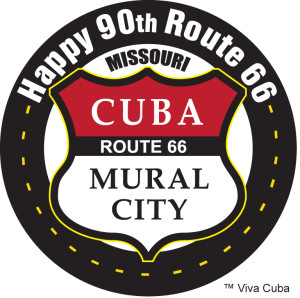
Route 66 brought development to Cuba, Missouri. It continues to bring travelers from all over the world.
The Print of the Historic Corner
Missouri artist Ray Harvey immortalized the small station building on the corner in this Christmas over Route 66: Cuba, Missouri print. It is also available in 5X7 cards. See details for ordering here.
For more information about the 4-way intersection read here and here.
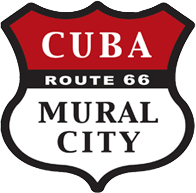
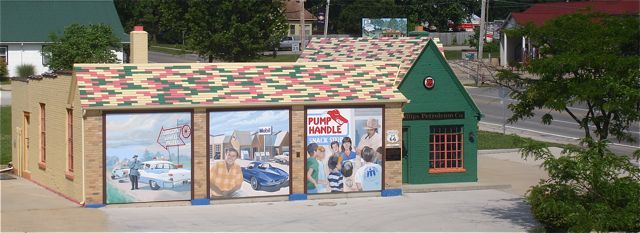
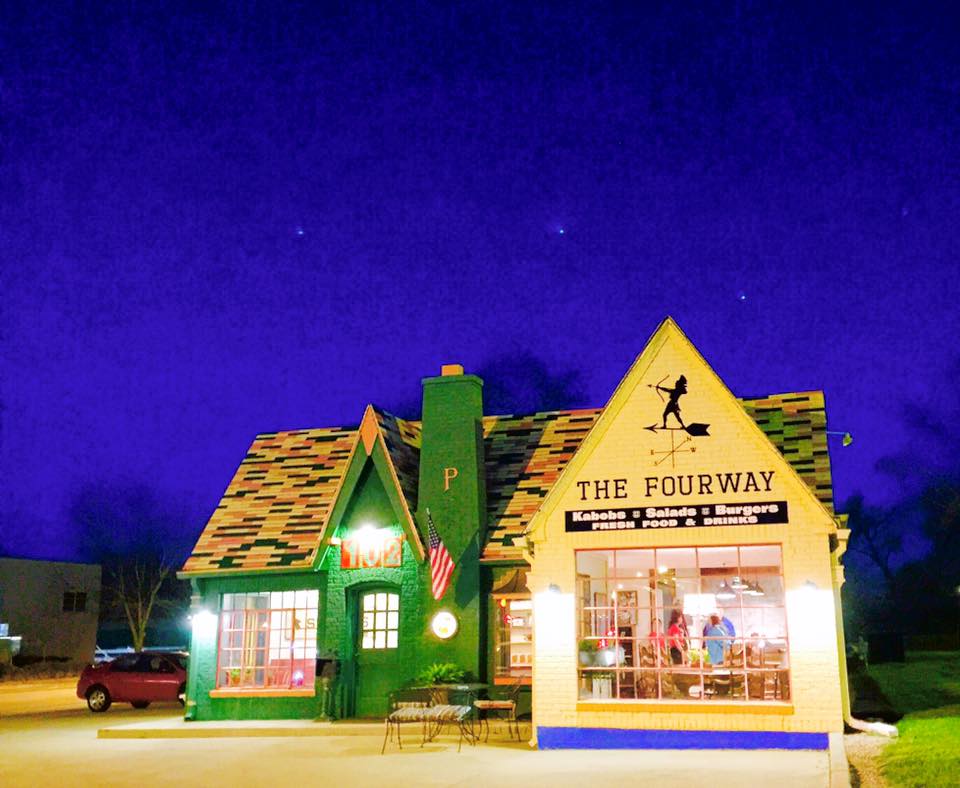
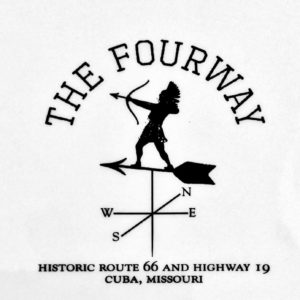
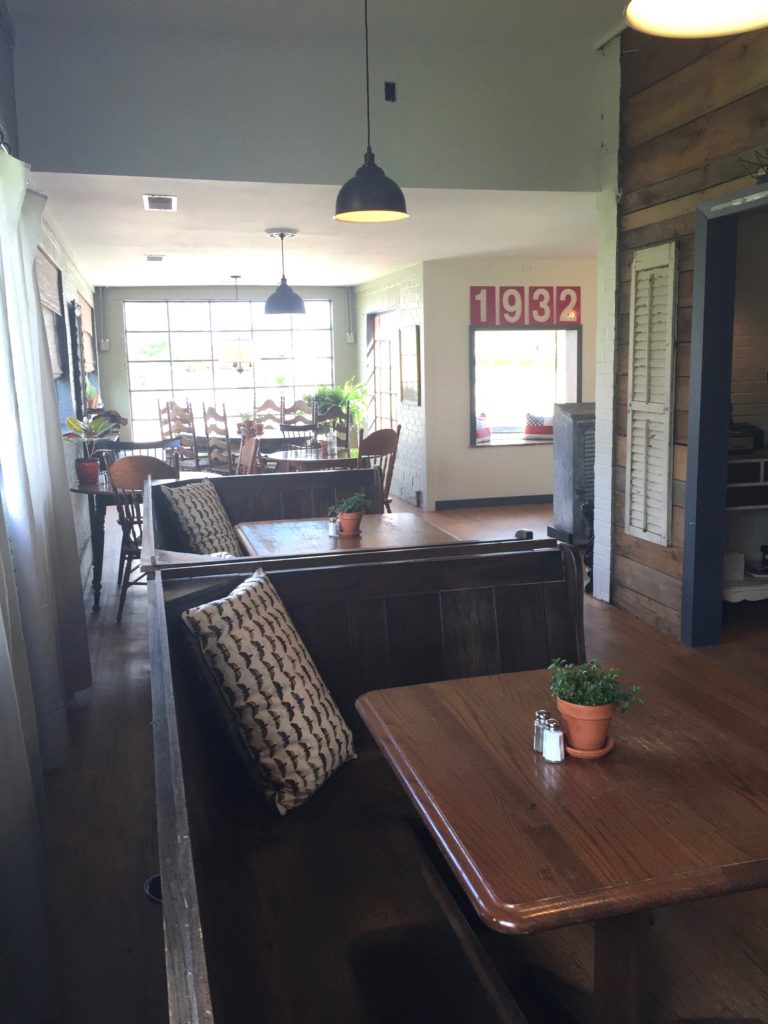
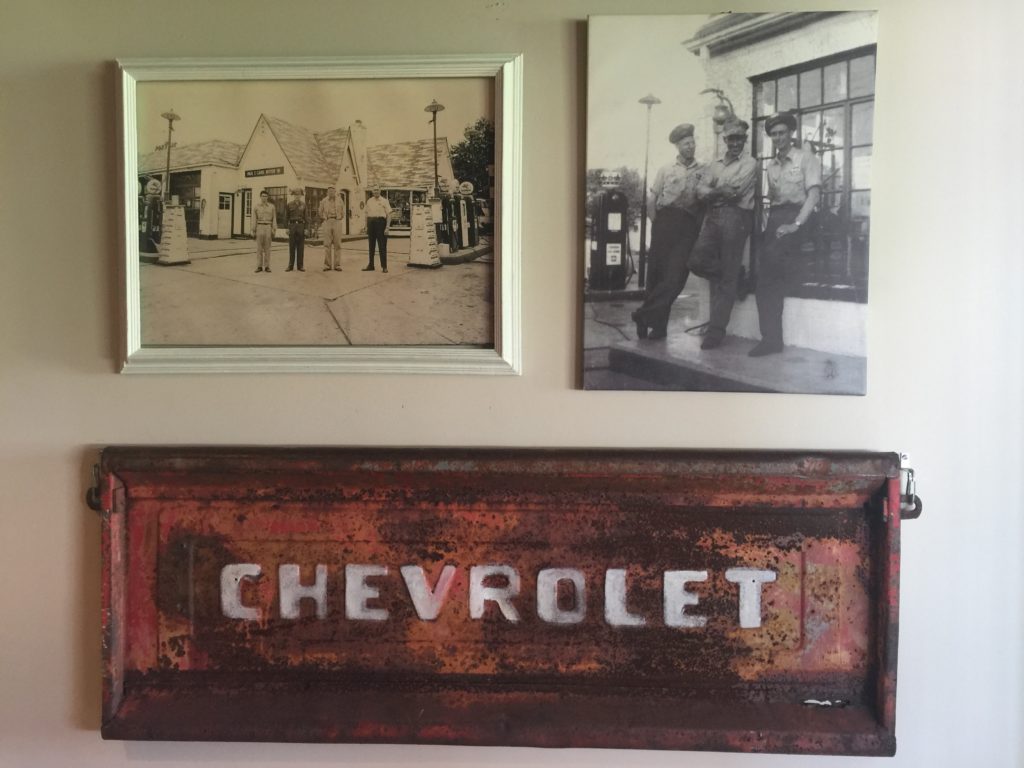
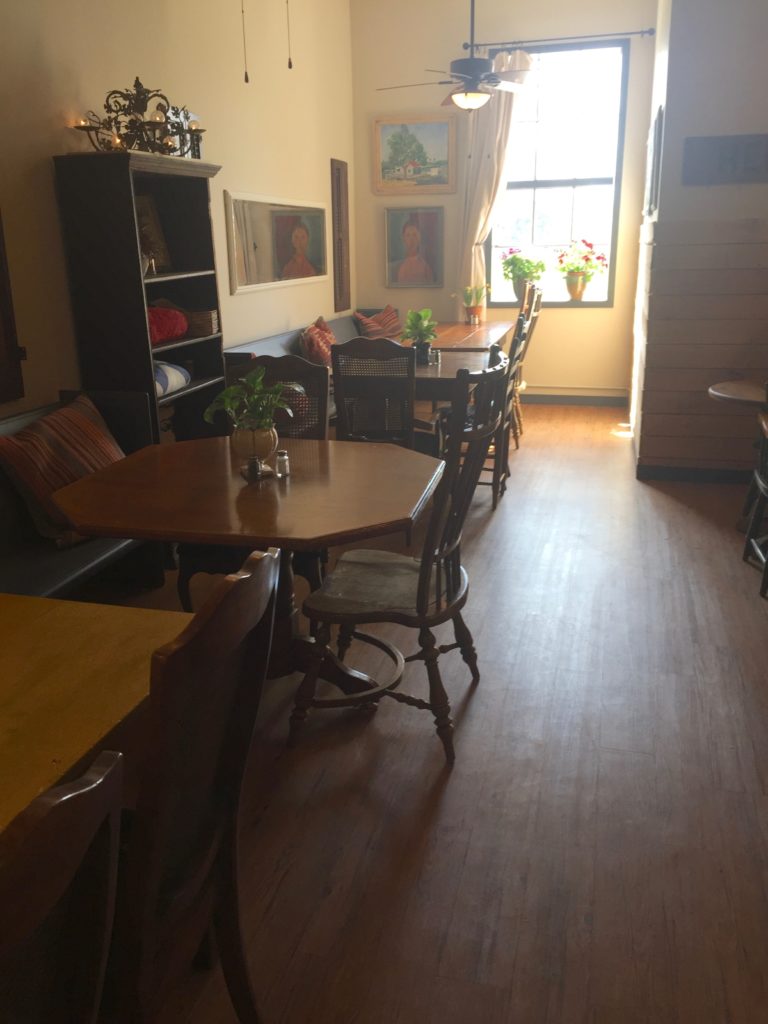
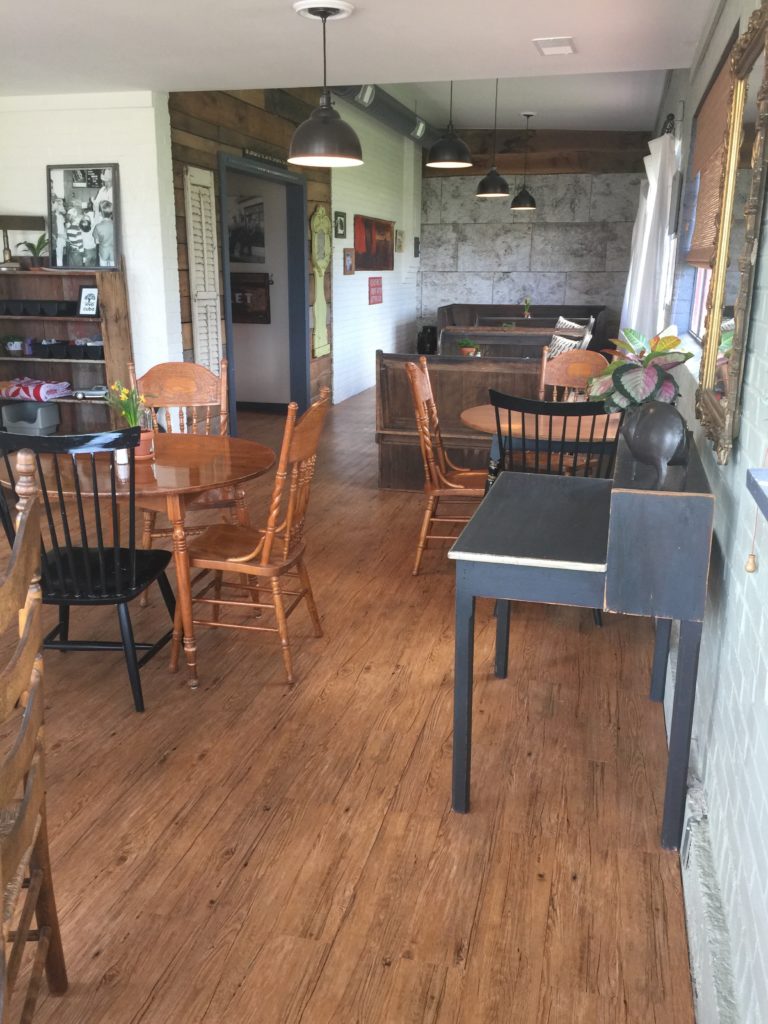
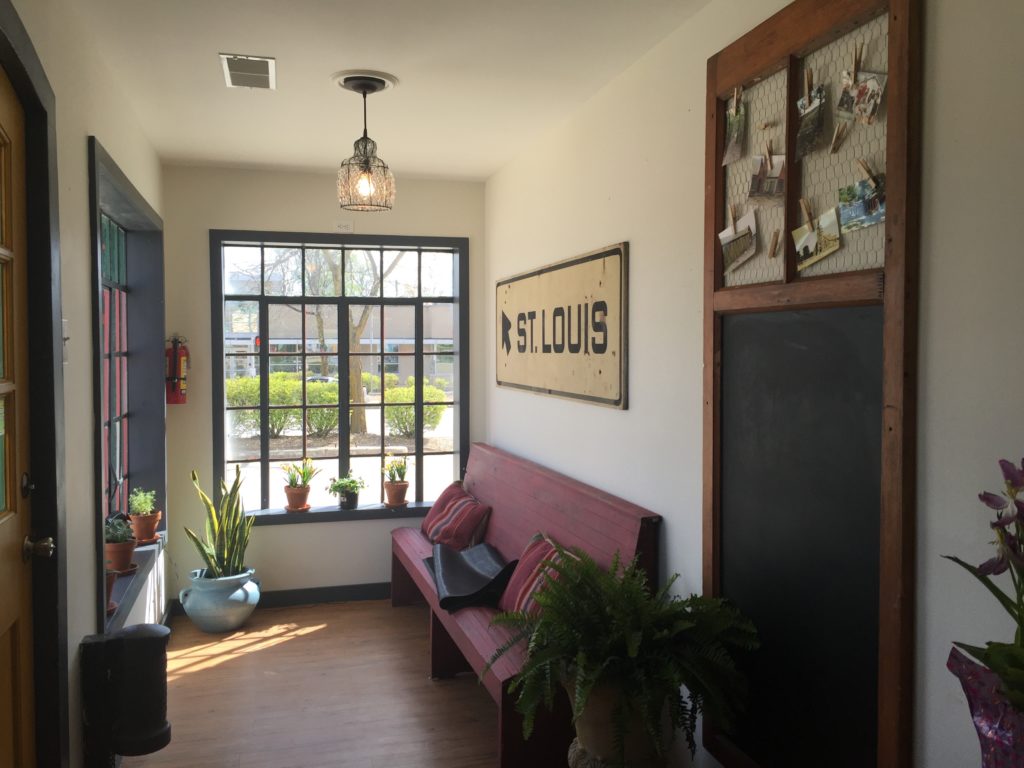
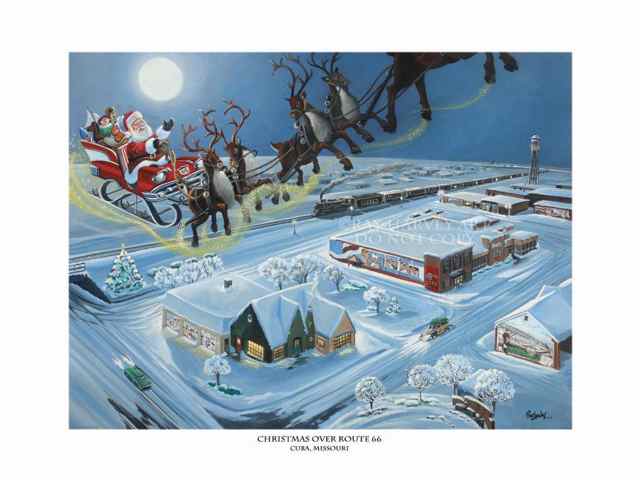


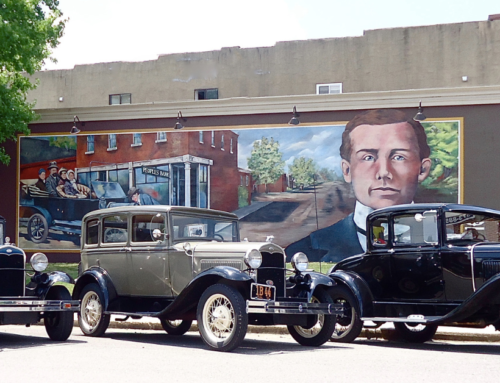

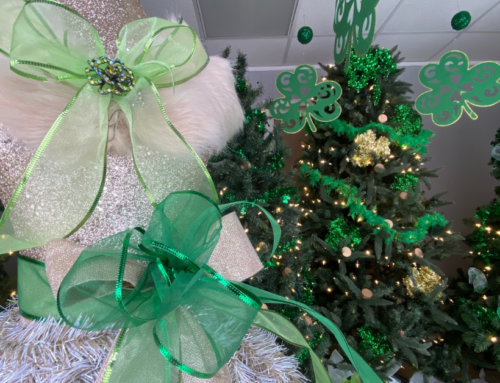

At one time this also was a place where donuts were made
Yes, it was the Washington Street Bakery. Washington is the local name for Route 66. The bakery made donuts for the Wallis family’s convenience stores.